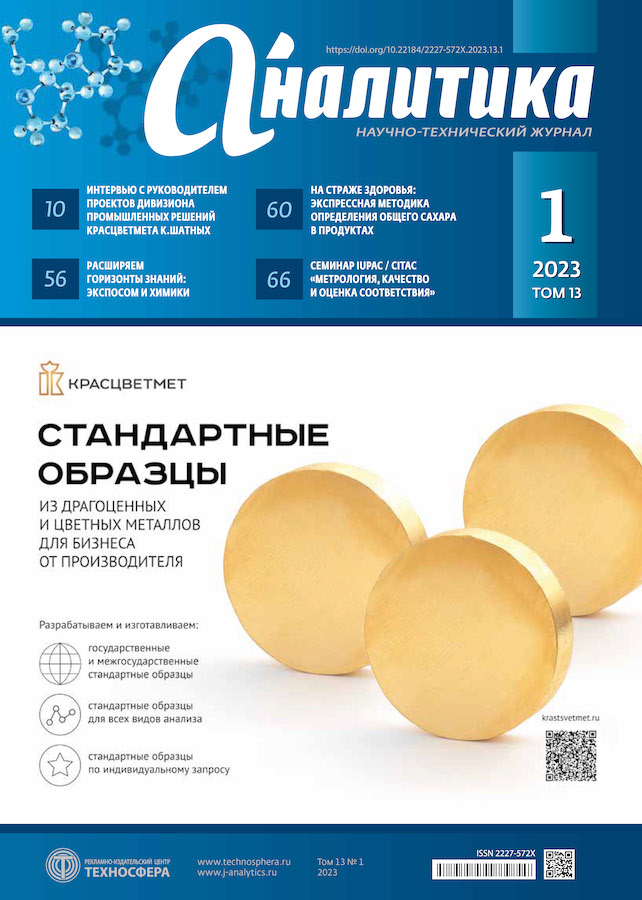Exposome and chemists
- Authors: Milman B.L.1, Zhurkovich I.К.1
-
Affiliations:
- ФГБУ НКЦТ им. С. Н. Голикова ФМБА России
- Issue: Vol 13, No 1 (2023)
- Pages: 56-59
- Section: Аналитика веществ и материалов
- URL: https://journals.eco-vector.com/2227-572X/article/view/626843
- DOI: https://doi.org/10.22184/2227-572X.2023.13.1.56.59
- ID: 626843
Cite item
Abstract
This article is an overview description of exposomics that is a concept and a modern field of biomedical and chemical-analytical research related to the study of the integrity of various exposures to a human body over a long time period. The complicated structure and components of an exposome
are considered. The external and internal exposomes and their chemical components, including exogenous compounds, products of their biotransformation and endogenous metabolites, are identified. It is indicated that the development of exposomics in its chemical aspects is based on the use of nontarget chemical analysis techniques, including various
variants of chromatography and mass spectrometry. The development of data science is characterized, the consequence of which is the emergence of numerous databases in which the relationship between various chemical compounds and certain diseases is outlined. The goals of exposomal research that are or should be carried out by analytical chemists
Full Text
About the authors
B. L. Milman
ФГБУ НКЦТ им. С. Н. Голикова ФМБА России
Email: bormilman@yandex.ru
д. х. н
Russian FederationI. К. Zhurkovich
ФГБУ НКЦТ им. С. Н. Голикова ФМБА России
Author for correspondence.
Email: bormilman@yandex.ru
к. х. н.
Russian FederationReferences
- Zaikin V. G., Borisov R. S. Mass spectrometry as the most important analytical basis of a number of omics sciences. Mass-Spectrometry. 2021; 18(1):4–31.
- Wild C. P. The exposome: from concept to utility. Int. J. Epidemiol. 2012; 41(1):24–32.
- Exposome and Exposomics. URL: https://www.cdc.gov/niosh/topics/exposome/default.html.
- Zhang H., Hu H., Diller M., Hogan W. R., Prosperi M., Guo Y., et al. Semantic standards of external exposome data. Environ. Res. 2021; 197:111185.
- Rappaport S. M. Biomarkers intersect with the exposome. Biomarkers. 2012; 17(6):483–489.
- Vermeulen R., Schymanski E. L., Barabási A. L., Miller G. W. The exposome and health: Where chemistry meets biology. Science. 2020; 367(6476):392–396.
- Milman B. L., Zhurkovich I. K. The chemical space for non-target analysis. Trends Anal. Chem. 2017; 97:179–187.
- Zhang P., Carlsten C., Chaleckis R., Hanhineva K., Huang M., Isobe T., et al. Defining the scope of exposome studies and research needs from a multidisciplinary perspective. Environ. Sci. Technol. Lett. 2021; 8(10):839–852.
- Bolon B., Haschek W. M. The Exposome in toxicologic pathology. Toxicol. Pathol. 2020; 48(6): 718–720.
- Barouki R., Audouze K., Becker C., Blaha L., Coumoul X., Karakitsios S., et al. The exposome and toxicology: a win–win collaboration. Toxicol. Sci. 2022; 186(1):1–11.
- Wishart D., Arndt D., Pon A., Sajed T., Guo A. C., Djoumbou Y., et al. T3DB: the toxic exposome database. Nucleic Acids Res. 2015; 43(D1): D928-D934.
- On Chemical Safety in the Russian Federation: Draft Federal Law. URL: https://www.profiz.ru/upl/2021/%D0%9F%D1%80%D0%BE%D0%B5%D0%BA%D1%82%20%D0%9D%D0%9F%D0%90.pdf.
- Vitale C. M., Price E. J., Miller G. W., David A., Antignac J. P., Barouki R., et al. Analytical strategies for chemical exposomics: exploring limits and feasibility. Exposome. 2021; 1(1): osab003.
- Flasch M., Koellensperger G., Warth B. Comparing the sensitivity of low- and high-resolution mass spectrometry for xenobiotic trace analysis: An exposome-type case study. 2022. URL: https://chemrxiv.org/engage/chemrxiv/article-details/6287303a87d01f083beb903a.
- Milman B. L., Zhurkovich I. K. Present-day practice of non-target chemical analysis. J. Anal. Chem. 2022; 77(5): 537–549.
- Barupal D. K., Fiehn O. Generating the blood exposome database using a comprehensive text mining and database fusion approach. Environ. Health Perspect. 2019; 127(9):097008.
- Meijer J., Lamoree M., Hamers T., Antignac J.-P., Hutinet S., Debrauwer L., et al. An annotation database for chemicals of emerging concern in exposome research. Environ. Int. 2021; 152:106511.
- Neveu V., Moussy A., Rouaix H., Wedekind R., Pon A., Knox C., et al. Exposome-Explorer: a manually-curated database on biomarkers of exposure to dietary and environmental factors. Nucleic Acids Res. 2017; 45(Database issue): D979–D984.
- Barupal D. K., Mahajan P., Fakouri-Baygi S., Wright R. O., Arora M., Teitelbaum S. L. CCDB: A database for exploring inter-chemical correlations in metabolomics and exposomics datasets. Environ. Int. 2022; 164:107240.
Supplementary files









